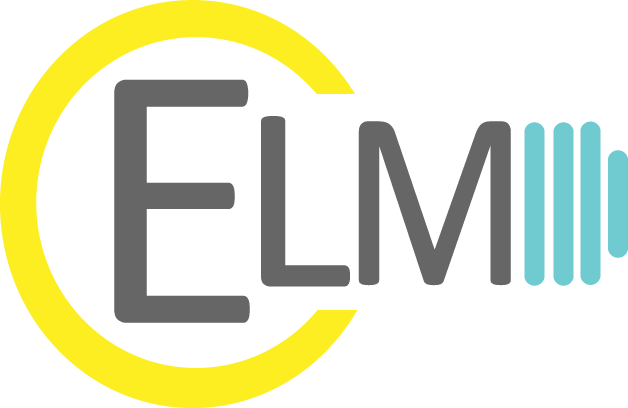WELL with ELM
The WELL Building Standard (WELL)
The WELL Building Standard™ version 2 (WELL v2™) is a vehicle for buildings and organizations to deliver more thoughtful and intentional spaces that enhance human health and well-being. WELL v2 includes a set of strategies—backed by the latest scientific research—that aim to advance human health through design interventions and operational protocols and policies and foster a culture of health and well-being. Built upon the pioneering foundation of the first version of the WELL Building Standard (WELL v1), WELL v2 draws expertise from a diverse community of WELL users, practitioners, public health professionals and building scientists around the world.
Not ready to make the full commitment? Try WELL Core. Learn More →
WELL Ratings

WELL Health-Safety
The WELL Health-Safety seal is a visible indication that you’ve done the work to put health and safety first in your facility. It communicates to everyone that evidence-based strategies like air quality monitoring, cleaning practices, hand washing support and more have been adopted and third-party verified. It means your team, customers and clients can feel safer anytime they walk through your doors.

WELL Performance
The WELL Performance Rating helps organizations implement best practices for continuous monitoring and performance across key IEQ metrics related to air quality, water quality, thermal comfort, acoustics, lighting and occupant experience. Comparing building performance to global benchmarks for health can help organizations shift the way they do business for the better.

WELL Equity
The WELL Equity Rating is a set of evidence-based strategies from the WELL Standard for transforming how places are designed, operated and managed to create environments where everyone can thrive.

Who is WHS for?
WHS is designed to empower owners and operators of large and small businesses alike. With WHS, you can take the necessary steps to prioritize the health and safety of your staff, visitors, stakeholders, and anyone else who may step foot in your facility.
What are the requirements for the WHS Rating?
The WHS Rating requires each building or space to achieve 15 features from the 6 main themes. A combination of the following including as many as three innovation submissions are needed to achieve the Rating. Unlike WELL, none of the features or strategies are mandatory.
What are the features of WHS?
The WHS Rating consists of a subset of relevant features from the WELL Building Standard (WELL) that were adapted for a facilities and operations focus. The WHS Rating consists of six health-safety themes including
-
- Cleaning and Sanitization Procedures
- Emergency Preparedness Programs
- Health Service Resources
- Air and Water Quality Management
- Stakeholder Engagement and Communication
- Innovation
WELL Health-Safety Rating
The WELL Health-Safety Rating for Facility Operations and Management is an evidence-based, third-party verified rating for all new and existing building and facility types focusing on operational policies, maintenance protocols, occupant engagement and emergency plans. It is designed to create a diverse set of features that can be customized based on facility type and adapted to an organization’s needs.
What does WHS Cost?
- Single location
- Enrollment fee: $5,000.
- Reduced pricing of $3,250 for small businesses.
- Multiple locations
- Save as you scale. With more locations, pay less per building.
- Pricing ranges from $2,500 to $17 per location, depending on the size of your enrollment. View the detailed fee table.
- Large-scale facilities
- Enrollment fee per location is: $12,600.
- Additional discounts are available for enrollments with two or more locations. Contact our team for a customized quote.
What is the process of getting WHS?
EXPLORE – Download and review the criteria for achieving the WELL Health-Safety Rating.
ENROLL – Sign up and share your commitment to pursue the WELL Health-Safety Rating.
CUSTOMIZE YOUR APPROACH – Select the features that are relevant to your building or space.
UPLOAD DOCUMENTATION – Provide feature-specific documentation using our digital platform to demonstrate your building or space meets the requirements of the WELL Health-Safety Rating.
REVIEW – Undergo third-party documentation for review by GBCI to confirm you’ve successfully met the feature-specific intent and requirements.
ACHIEVE – Earn the WELL Health-Safety Rating and promote your achievement.
RENEW – Apply for your annual seal to demonstrate ongoing commitment to upholding operational policies, maintenance protocols and emergency plans.

Who is WELL Performance for?
The WELL Performance Rating is for all organizations looking for data-driven strategies to enhance workplace well-being. The WELL Performance Rating can be pursued as a standalone achievement or combined with the WELL Health-Safety Rating, WELL Certification or WELL Portfolio as part of your larger health and well-being strategy.

How does the WELL Performance Rating work?
Measurable data makes up the core of the Performance Rating–each feature is verified through on-site testing performed by a WELL Performance Testing Agent or other professional, data collected by permanently installed monitoring systems or insights drawn from occupants via surveys and other methods.
To achieve the WELL Performance Rating, your project must achieve 21 features–unlike WELL Certification, there are not distinct achievement levels. Some features allow multiple pathways; for example, measurements of particulate matter (Feature PA1: Meet Thresholds for Particulate Matter) may come from permanently installed continuous monitors or a WELL Performance Testing Agent. In addition to the 7 action areas, novel solutions that address health and wellbeing problems are encouraged through the Innovation feature. Facilities must meet the occupancy criteria for performance verification.
WELL Performance Rating
The WELL Performance Rating is based on a subset of features from the WELL Building Standard that enables organizations to focus on measurable building performance strategies verified through onsite testing and sensor technology. The WELL Performance Rating was developed with verifiable strategies in mind and third-party validation at its heart. The performance measurements cover air, light and water quality as well as thermal and acoustic comfort. Occupant experience surveys connect building performance with the people inside, so organizations can make smarter decisions for their employees and business.
What does WELL Performance Cost?
- Single location
- Enrollment fee: $5,000.
- Reduced pricing of $3,250 for small businesses.
- Multiple locations
- Save as you scale. With more locations, pay less per building.
- Pricing ranges from $2,500 to $17 per location, depending on the size of your enrollment. View the detailed fee table.
What are the features of WELL Performance?
The WELL Performance Rating includes 33 features organized into 7 action areas:
-
- Indoor Air Quality – Indoor Air Quality features seek to promote clean air and minimize human exposure to harmful contaminants, to maximize benefits to productivity, health and well-being.
- Water Quality Management – Water Quality Management features aim to increase the rate of adequate hydration in building users and reduce health risks due to contaminated water.
- Lighting Measurement – Lighting Measurement features aim to provide a lighting environment that reduces circadian phase disruption, improves sleep quality and positively impacts mood and productivity.
- Thermal Conditions – Thermal Conditions features require interventions to provide comfortable thermal conditions to most building users supporting human health, well-being and productivity.
- Acoustic Performance – Acoustic Performance features aim to address the concerns of acoustical comfort through research-based design considerations that buildings can accommodate for the purposes of improving occupant health and well-being.
- Environmental Monitoring – Environmental Monitoring features seek to implement evaluation strategies to ensure clean air, thermal comfort, and safe drinking water maximize benefits to productivity, well-being and health.
- Occupant Experience – Occupant Experience features capture invaluable occupant feedback, empowering stakeholders with the information needed to identify priority interventions and take action to create healthier and more productive spaces.
WELL Equity Rating
The WELL Equity Rating is a set of evidence-based strategies from the WELL Building Standard for taking action toward diversity, equity and inclusion goals and driving improvements in company culture and resilience.

What is WELL Equity Rating?
WELL Equity Rating is the newest rating from WELL. It’s intentions include:
-
- Creating a more diverse and inclusive workplace.
- Enhancing ESG reporting and performance.
- Bolstering employee recruitment, retention and productivity.
- Designing environments where everyone can thrive and feel welcome.
- Supporting individuals that identify as BIPOC, first-generation immigrants, LGBTQ+, physically disabled, neurodivergent or primary caregivers.
The WELL Equity Rating contains more than 40 features spanning six action areas:
-
- User Experience and Feedback (EE) – The User Experience and Feedback action area promotes strategies that help organizations understand the needs of their stakeholders and create plans to support action and accountability.
- Responsible Hiring and Labor Practices (EH) – The Responsible Hiring and Labor Practices action area includes strategies that support a diverse and inclusive workforce.
- Inclusive Design (ED) – The Inclusive Design action area promotes design strategies that aim to support equitable and inclusive spaces.
- Health Benefits and Services (EB) – The Health Benefits and Services action area aims to drive organizational stability and employee retention through strategies that support equitable benefits and services.
- Supportive Programs and Spaces (ES) – The Supportive Programs and Spaces action area includes strategies for spaces and supportive programs that promote inclusion and access.
- Community Engagement (EC) – The Community Engagement action area aims to promote interaction, inclusion and access for all community members and stakeholders.
In addition, the WELL Equity Rating recognizes projects which have achieved innovative approaches to promoting the creation of more equitable spaces. Projects must achieve at least 21 points to be awarded the WELL Equity Rating. Unless otherwise indicated, each feature is one point. To maintain the rating, projects undergo an annual renewal process to confirm their policies, programs and/or designs continue to meet the feature requirements.
How much does WELL Equity cost?
- Single location
- Enrollment fee: $5,000.
- Reduced pricing of $3,250 for small businesses.
- Multiple locations
- Save as you scale. With more locations, pay less per building.
- Pricing ranges from $2,500 to $17 per location, depending on the size of your enrollment. View the detailed fee table.
The WELL Building Standard
The WELL Building Standard (WELL) is a roadmap for creating and certifying spaces that advance human health and well-being. Developed over 10 years and backed by the latest scientific research, WELL sets pathways for accomplishing health-first factors that help every one of us to do our best work and be our best selves by supporting our physical and mental health. Rigorous performance standards for design interventions, operational protocols and company-wide practices are verified by a third party. WELL works at any scale, from a single interior space to an entire organization.
WELL Certification is ideal for organizations implementing WELL within a single building or asset. The program helps organizations monitor ongoing building performance and collect employee feedback, enabling them to take a data-driven approach to their health and well-being efforts. Organizations can leverage quantifiable metrics from WELL Certification to advance Environmental, Social and Governance (ESG) reporting efforts.
Projects are required to pursue a certain subset of features or strategies within the 10 WELL concepts, including Air, Water, Thermal Comfort, Light, Movement, Nourishment, Sound, Mind, Community and Materials. In order to demonstrate compliance with program requirements, projects must submit documentation, which is evaluated and tested by a third party. Projects earn points toward their WELL Certification goal with every feature they achieve. Upon achievement, projects receive a plaque indicative of one of four levels of certification based on the total number of points earned.
-
- WELL Certified Bronze: 40 points
- WELL Certified Silver: 50 points
- WELL Certified Gold: 60 points
- WELL Certified Platinum: 80 points

Who is the WELL Certification for?
WELL is equitable. It benefits all types of people, especially those who need it the most. With reduced pricing for emerging markets and sectors, we are committed to making WELL work for everyone. WELL is global. With a pathway for global projects to adhere to requirements that are relevant to their country or region, WELL is accessible in countries all around the world. WELL is for new and existing buildings. Both existing buildings and new construction projects can achieve WELL Certification. Extensive renovation or construction may not be required for existing locations to accrue the necessary number of points to achieve certification.
What are the requirements to achieve WELL Certification?
Projects pursuing WELL Certification can earn points based on performance outcomes for various policy, design and operational strategies and can achieve one of four certification levels: Bronze, Silver, Gold or Platinum.
| Total Points Achieved | WELL Certification | |
| Minimum Points per Concept | Level of Certification | |
| 40 pts | 0 | WELL Bronze |
| 50 pts | 1 | WELL Silver |
| 60 pts | 2 | WELL Gold |
| 80 pts | 3 | WELL Platinum |
What does the WELL Certification Cost?
- Enrollment fee: $2,500
- Program fee: $0.16/sq ft* with a minimum of $6,500 and capped at $100,500
- Required performance testing fees start at $6,500.
*Note: industrial location fees are reduced to $0.08/sq ft

What are the WELL Certification features?
The 10 WELL concepts address the following themes: Air, Water, Nourishment, Light, Movement, Thermal Comfort, Sound, Materials, Mind and Community.
Each WELL concept includes features that address design, culture, operational policies and maintenance protocols. When implemented, these specific changes can help any building or organization better serve the health of its customers, employees and visitors. Each feature contains one or more parts that include specific requirements, standards or thresholds.
There are two types of features: preconditions and optimizations. Preconditions are mandatory requirements that are considered to be fundamental to a WELL Certified space. Projects can also earn points through optional features, known as optimizations. Each project can select which optimizations to pursue and which parts to focus on within each optimization.
The WELL Air Concept seeks to implement holistic design strategies to promote clean air and minimize human exposure to harmful contaminants, in order to maximize benefits to productivity, well-being and health.
-
- 4 Preconditions
- 10 Optimizations
- 18 available points
The WELL Water concept aims to increase the rate of adequate hydration in building users, reduce health risks due to contaminated water and excessive moisture within buildings and provide adequate sanitation through better infrastructure design and operations coupled with awareness and maintenance of water quality.
- 3 Preconditions
- 6 Optimizations
- 14 available points
The WELL Nourishment concept supports healthy and sustainable eating patterns by increasing access to fruits and vegetables, limiting the availability of highly processed foods and designing environments that nudge individuals toward healthier choices.
-
- 2 Preconditions
- 12 Optimizations
- 16 available points
The WELL Light concept aims to provide a lighting environment that reduces circadian phase disruption, improves sleep quality and positively impacts mood and productivity.
-
- 2 Preconditions
- 7 Optimizations
- 18 available points
The WELL Movement concept aims to promote movement, foster physical activity and active living and discourage sedentary behavior, by creating and enhancing opportunities through the spaces where we spend our lives
-
- 2 Preconditions
- 9 Optimizations
- 21 available points
The WELL Thermal Comfort concept takes a holistic approach to thermal comfort and provides a combination of research-based interventions to help design buildings that address individual thermal discomfort and support human health, well-being and productivity.
-
- 1 Preconditions
- 8 Optimizations
- 16 available points
The WELL Sound concept aims to provide a comprehensive and holistic approach to addressing the concerns of acoustical comfort through research-based design considerations that buildings can accommodate for the purposes of improving occupant health and well-being.
-
- 1 Preconditions
- 8 Optimizations
- 18 available points
The WELL Materials concept advances two strategies for selecting building materials and products. One is to increase literacy on materials by promoting ingredient disclosure, whereas the second is to promote the assessment and optimization of product composition in order to minimize impacts to human and environmental health. Both strategies aim to bridge data gaps in the supply chain, supporting innovation in green chemistry and advancing market transformation towards healthier and more sustainable products.
-
- 3 Preconditions
- 9 Optimizations
- 18 available points
The WELL Mind concept promotes implementation of design, policy and programmatic strategies that support cognitive and emotional health through a variety of prevention and treatment efforts. In combination, these interventions have the potential to positively impact the short- and long-term mental health and well-being of individuals of diverse backgrounds throughout a community.
-
- 2 Preconditions
- 9 Optimizations
- 19 available points
The WELL Community concept promotes the implementation of design, policy and operations strategies that focus on addressing health disparities and promoting social diversity and inclusion. Providing access to health services, inclusive and health-promoting policies, and design that enables all individuals to access, participate and thrive within a space can build a foundation for truly equitable, diverse and healthy communities.
-
- 4 Preconditions
- 20 Optimizations
- 42 available points
WELL Core
WELL Core Certification is a distinct pathway of achievement for core and shell buildings seeking to implement fundamental features in the base building for the benefit of tenants/residents. All building types can register for WELL Core provided that at least 75% of the project area is occupied by one or more tenants/residents and/or serves as common space in the building accessible to all tenants/residents. Note that offices affiliated with the project owner but unrelated to the management of the project property may be considered a tenant so long as additional tenants unaffiliated with the project owner occupy at least 60% of the gross floor area.
WELL Core Requirements – WELL Core Certification showcases how a project implements health-focused features in the base building to benefit the people working or living there (e.g., employed by the tenants and the building owner).
WELL Core Requirements
WELL Core Certification showcases how a project implements health-focused features in the base building to benefit the people working or living there (e.g., employed by the tenants and the building owner).
All building types can register for WELL Core Certification, provided that:
-
- At least 75% of the project area is occupied by one or more tenants and/or serves as common space in the building accessible to all tenants
- At least 2.5% of the total building floor area is made available for performance testing. The available testing area must include all common areas and spaces directly under the control of the building management team.
WELL Core Pricing
- Enrollment fee: $2,500
- Program fee: $0.08/sq ft* with a minimum of $6,500 and capped at $100,500
- Required onsite performance testing starting at $6,500
*Note: industrial location fees are reduced to $0.05/sq ft
Additional requirements for specific property types:
- Office – Offices affiliated with the project owner but unrelated to the management of the project property may be considered a tenant so long as additional tenants unaffiliated with the project owner occupy at least 60% of the net leased area.
- Mixed Use – Mixed-use buildings must meet one of the requirements below to be eligible for WELL Core enrollment.
-
-
- At least 60% of the project area is occupied by one or more tenants
OR - If WELL Core is appropriate for less than 60% of the project area, the project should register one or more portions of the building as individual projects for WELL Certification under WELL v2 or WELL Core Certification, as appropriate.
- At least 60% of the project area is occupied by one or more tenants
-
- Residential – In WELL v2, multifamily residential projects should pursue WELL Certification (i.e., not WELL Core). This is the case even though the regular occupants are primarily tenants and the project owner may not complete fit-out for the dwelling units.
-
- Building must contain at least 5 dwelling units.
- Building provides minimal fit-out of the dwelling units, defined as meeting at least two of the following requirements where the developer does not install:
- Kitchen cabinets
- Stoves/ranges, ovens, or refrigerators
- Showers/baths, toilets, or sinks in the bathroom or kitchen
- HVAC terminals
- Project owner is unable to provide access to dwelling units for performance testing.
